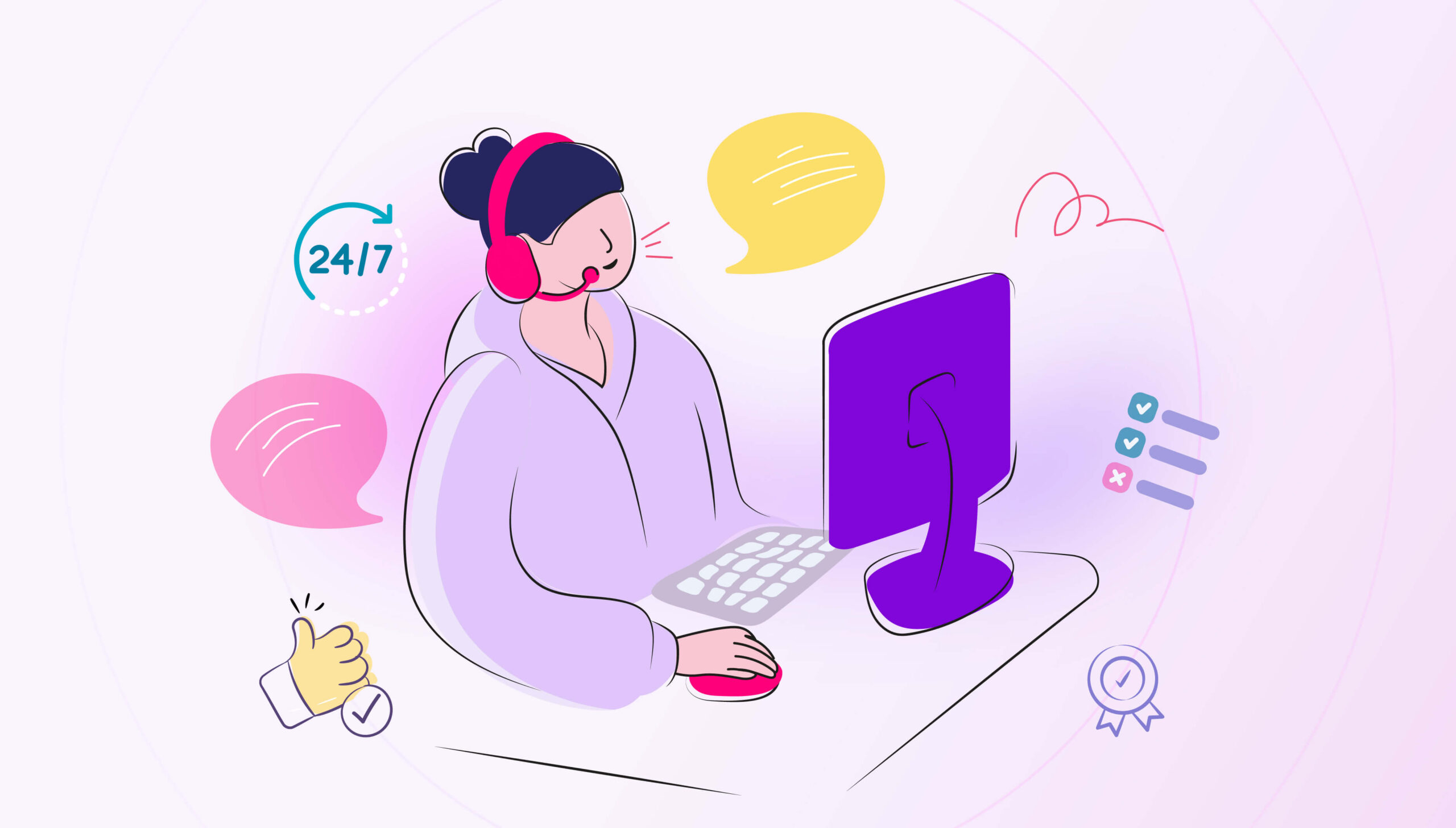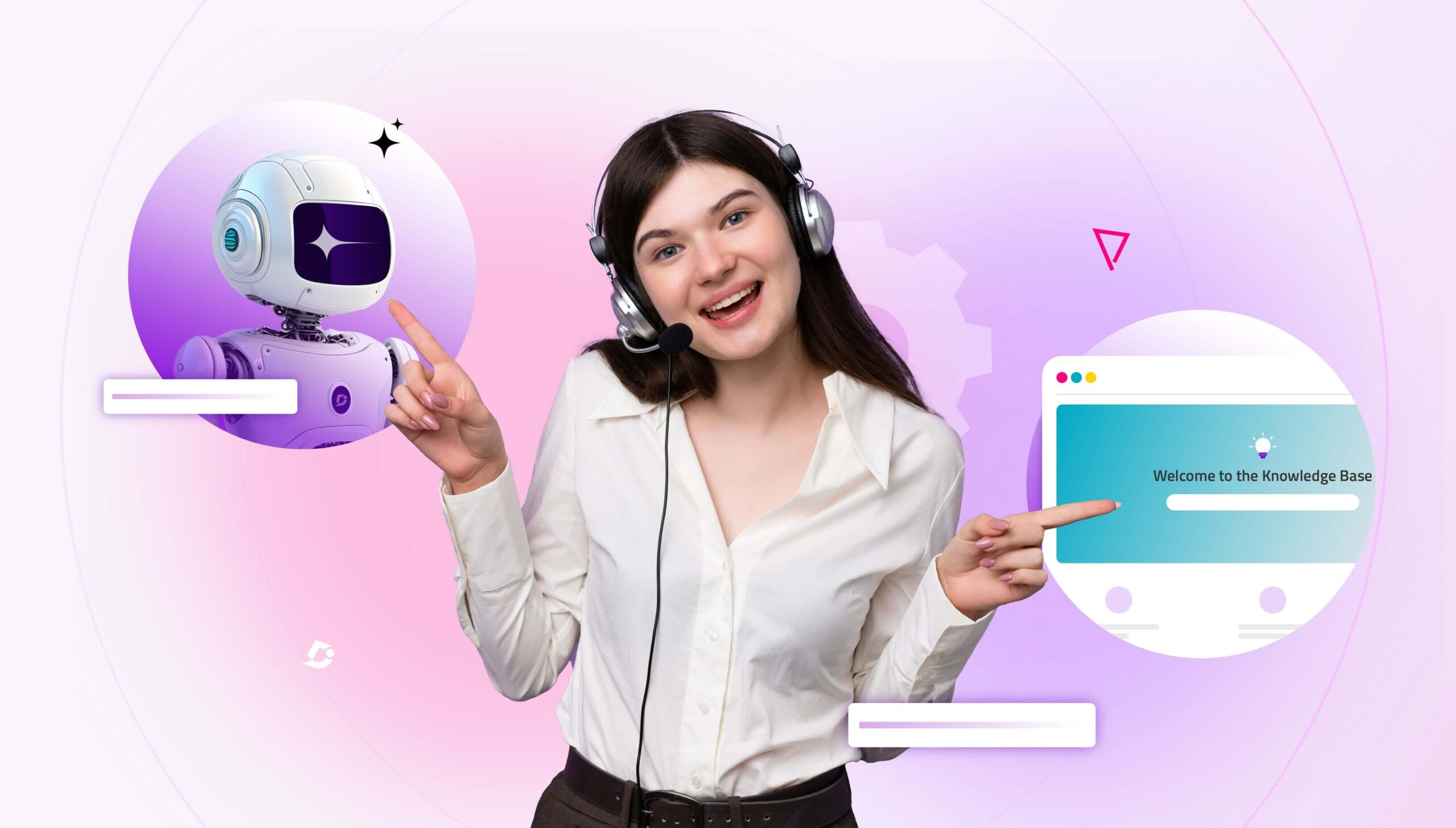When you buy a new software product, what’s the first thing you do? Log in, and then learn how to use it. No one can expect that you will intuitively know exactly how it works unless it is a very simple interface that is extremely similar to other existing products.
Many products, especially in the SaaS industry, are not completely self-explanatory. Customers usually need some help learning how to use your product and accelerate their time to the first value, or they may get bored and churn. 55% of customers say they have returned a new product because they didn’t know how to use it, which is alarming for SaaS companies.
Companies that don’t onboard their customers miss a valuable opportunity to create customer engagement and loyalty. If you win over a customer but fail to onboard them, you’ve wasted all that sales and marketing effort and potentially damaged your reputation.
What is Customer Onboarding?
Customer onboarding, or SaaS customer onboarding, is getting users set up with your product for the first time. The customer success team usually executes it and involves using specialist software such as onboarding tools, customer success software, and self-service knowledge bases.
Since customers can be onboarded online, you have access to all the most effective tools to help customers learn to use your product.
If your SaaS is complex, you’ll want to set up an onboarding process, and if you want to keep costs under control, you’ll want it to be self-service or low-touch. This means that some or all parts of the onboarding process are automated so that customers can complete it independently.
The faster your customer succeeds with your product after signing up, the more effective your onboarding process has been. It doesn’t mean learning everything there is to know about the complexity of your platform, but simply enough to find the first value.
Why is Customer Onboarding so Important?
86% of customers said they would be more likely to remain loyal to a company that invested in onboarding and educated them after they bought the product. This means that spending time and money on effective onboarding is extremely valuable and contributes to overall revenue since customers stay with your company longer.
Guiding your customers through the first stages of your product is essential for activating your customers, customer retention, and customer loyalty. You’ll receive fewer requests from your support team when you provide customers with the materials for success, lowering overheads and reducing the support burden.
When you onboard a customer, it’s an integral part of the customer experience because you’re keeping your promise to provide value. You’re not expecting your customers to struggle independently or work out things for themselves, but revising a trusted process that guides them towards their “aha moment”.
4 Components of Successful Customer Onboarding
Consider the following components of successful customer onboarding.
Aha Moment
You’ll always want to look out for that “aha moment” that customers experience when they find the proposed value of your product for the first time. You’ll need to make this “aha moment” as obvious and as fast as possible so that customers don’t develop regret and cancel their subscription before you can fulfill your promise.
User Activation
User activation is similar to the “aha moment,” but it happens when users discover the full set of features inherent in your product for the first time. It’s the intended value your product was meant to deliver when users move from simply perceiving value to actually experiencing it.
User Adoption
User adoption is when the product becomes indispensable to your user’s workflows and the user can’t imagine being without your product. User adoption is the final result of successful onboarding, and the user is fully engaged with your product.
Power User
A power user is when the user becomes someone who uses your product all the time, is an evangelist, and is thoroughly familiar with most of your product’s features. They could become someone who could sell your product to others.
Steps in Best Customer Onboarding
The following steps are essential for the best customer onboarding process.
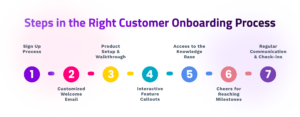
Sign Up Process
First, create an intuitive signup process that removes all friction from the process. Eliminate unnecessary form fields, limit the number of steps, and foster a sense of trust. You’re establishing the foundation of your relationship with the customer, so make it easy for them to enter this bond with you, and don’t ask them to jump through lots of hurdles.
Customized Welcome Email
It’s found that more than 80% of customers will open a welcome email, making it the email with the highest open rates. This is your chance to include all the information you want your customers to know before they embark on their journey with your product and your chance to establish yourself as a trusted expert.
Product Setup and Walkthrough
Guide your users through setting up the product and getting the most out of it immediately, ensuring that it is working as intended. Make it impossible for users to skip any step crucial to the software’s successful running. Provide interactive walkthroughs that take customers through the software as it is intended to be used.
Interactive Feature Callouts
Call out specific features that users may not have discovered yet to improve product adoption and success with the software. Allow customers to turn off the notifications if they have already interacted with the feature and demonstrate how features are meant to be used.
Access to the Knowledge Base
Don’t forget to integrate access to the knowledge base from your software app so that customers can look up any questions they have during onboarding. Brainstorm questions that customers typically have during onboarding, which they fire off to the support team, and use AI features to improve content discovery.
Schedule a demo with one of our experts to take a deeper dive into Document360
Book A Demo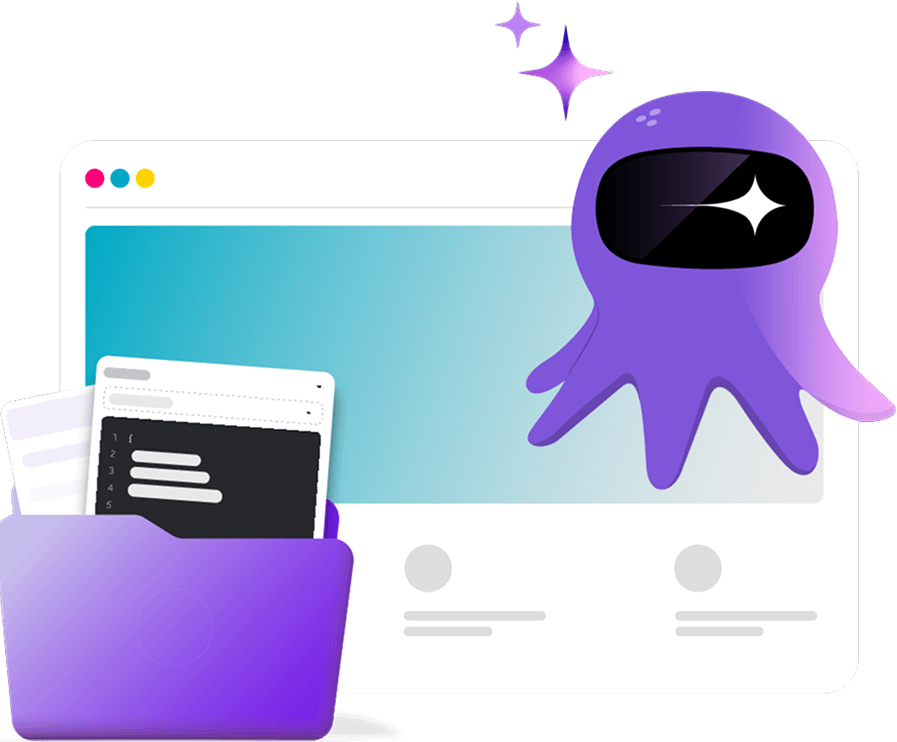
Cheers for Reaching Milestones
Provide customers with rewards when they pass certain milestones to gamify the whole process of onboarding and motivate them to move forward. Show customers with a percentage score how far they are through onboarding, and potentially use a checklist to help them.
Regular Communication and Check-ins
Use the resources of your customer success team to check in with customers as they progress through onboarding, making sure to intervene in case they have any problems. Customers experiencing frustration may churn without seeking help but communicating actively throughout helps to establish a bridge.
Also read: New Member Onboarding Process: Importance & Methods
Benefits of Having an Effective Customer Onboarding
Now we’re going to look in a little more depth at the benefits of having an effective customer onboarding process.
Create Positive First Impressions
When your customers first sign up, it makes a much better impression on them if you have an effective onboarding process. Give customers no cause to regret purchasing your product by showing them immediately what it can do rather than expecting them to figure things out independently.
Accelerates Time-To-Value
Customers will reach time-to-value (when they first experience value with your product) much faster when you provide them with comprehensive onboarding that moves them through the process. Customers evaluating your product need to experience value, or you risk them considering other options.
Control the Churn Rates
Churn is a huge problem for SaaS companies, but onboarding effectively plugs the hole for customers churning by providing a reason for them to stay. Customers are less dissatisfied with your product when they know how to use it and understand what it can do for them. Onboarding is a direct antidote to churn.
Facilitates Product Adoption
Customers adopt your product and learn about all its features when onboarding guides them through the system. Customers become committed users instead of remaining unsure and on the fence, and your product becomes an indispensable part of their daily lives and especially integrates with other products or systems they are already using.
Improves Customer Loyalty
Customers will be more loyal to your company when you give them a reason to stay. As mentioned, when companies offer great onboarding, customers see it as an investment in them. Companies are fulfilling expectations and more when they implement an onboarding process.
Keep Your Customers Engaged
Onboarding can lead seamlessly into product education and training, which keeps your customers engaged in the long term. Keep teaching your customers new things about your product to convince them of ongoing value and help them understand that your product is always developing.
Also, check out our article: Customer onboarding in banking
Customer Onboarding Examples
Now, we will look at some of the best onboarding examples within the SaaS industry.
Prerender- Use knowledge base to improve User Adoption
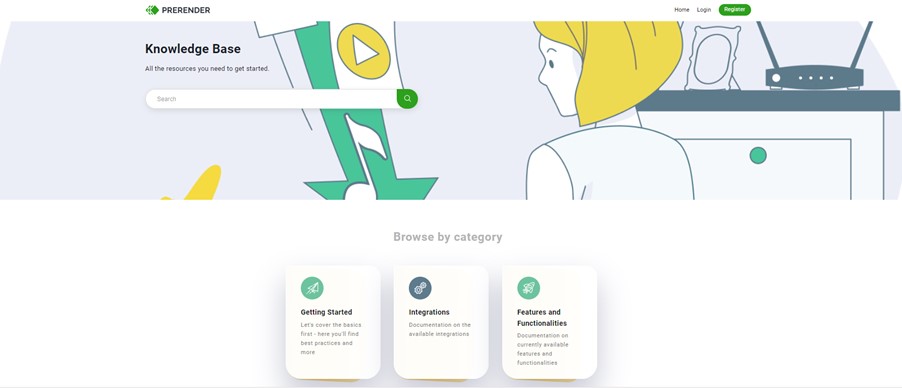
Prerender is a SaaS firm that optimizes JavaScript web pages SEO (Search Engine Optimization) friendly. Prerender provides 100% cached copies of web pages to search engine bots with trouble running JavaScript.
Their business had end users as customer developers who needed to access a single source of truth (documentation) to follow clear instructions to connect Prerender.io to their web server. For this, they decided to opt for Document360 to publish their technical documentation with specific requirements for the developers. This helped them improve the user adoption rate.
Schedule a demo with one of our experts to take a deeper dive into Document360
Book A Demo
Albacross – Use of Checklists to Improve User Activation Rate
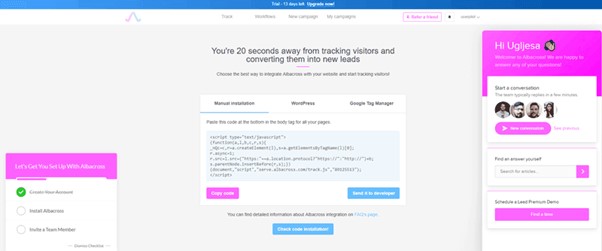
Albacross is a lead generation platform that shows you who is visiting your website. Albacross uses engaging checklists to sweep customers through the onboarding process, which appears to prevent users from dropping out since they can visualize their progress. The big point of friction was asking users to install a javascript snippet on their website which caused a lot of users to abandon the process, but Albacross improved activation by 33% through checklists.
TIDIO – Application of User Psychology (Zeigarnik Effect)
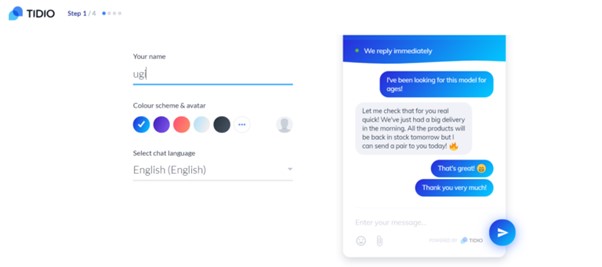 The Zeigarnik effect is a phenomenon in psychology in which users better remember uncompleted tasks than completed ones. This means that uncompleted tasks weigh heavier on the mind and users will be prompted to reach the end of the onboarding process if you use progress bars to remind them of uncompleted tasks. In order to encourage users to finish creating their chatbots, Tidio nudges them forward with a four-step process that engages users effectively.
The Zeigarnik effect is a phenomenon in psychology in which users better remember uncompleted tasks than completed ones. This means that uncompleted tasks weigh heavier on the mind and users will be prompted to reach the end of the onboarding process if you use progress bars to remind them of uncompleted tasks. In order to encourage users to finish creating their chatbots, Tidio nudges them forward with a four-step process that engages users effectively.
Duolingo – Gamified Onboarding to Increase Engagement
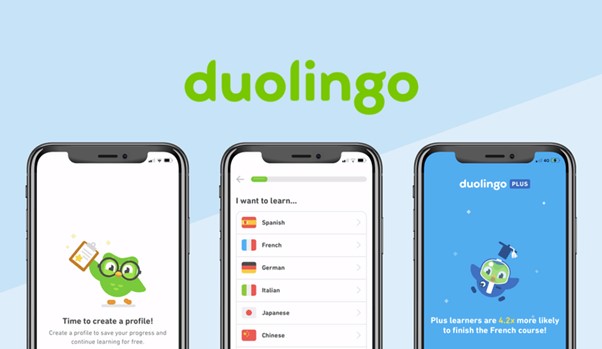
Duolingo is one of the most successful apps in the language learning space, gamifying the process of learning a language for users who want to use technology to accelerate learning. Using their signature avatar to welcome users, Duolingo’s onboarding experience is very similar to what the process of actually using the app will be like. Gain points and badges as you begin the language learning process and accelerate your progress.
Measuring Customer Onboarding Success
Implementing onboarding will not be effective unless you measure your success with the following metrics.
Time to first value
We’ve already touched upon the importance of time-to-first value, which is the time that elapses between when customers sign up for your product and when they experience their first value with it. The shorter the time between these two points, the less likely customers are to churn before they become engaged with and loyal to your product.
Conversion or Upgrade Rate
When your Customer Success Managers can convert your customers again or upgrade them to a higher tier, then you can consider this a positive step in the right direction. It’s always possible to extract more value from existing customers if you look after them and provide them with value.
Customer Engagement
When customers are engaged with your product, it means they are actively using it and exploring features, finding new use cases, and using it for its intended purpose. Customer engagement is a good measure of the success of customer onboarding because that is the ultimate purpose of onboarding – to have customers come to enjoy using your product.
Wrapping Up
Onboarding is a vital adjustment period for customers who are excited about learning to use your product. While you may have won your customers over initially with marketing and sales tactics, the proof is in the pudding for customer onboarding when you must finally convince customers that they made the right choice.
Measuring, strategizing, and improving are all key features in the onboarding process, in which you must evolve alongside your customers or risk losing them. It’s been proven that customers will feel disloyal unless you invest in customer onboarding, so welcome customers with the royal red carpet.
If you neglect customers after they’ve already committed to your product, they won’t thank you. Using tried and tested techniques like progress bars, gamification, and checklists makes it more likely that users will accomplish the actions you deem important for them.
An intuitive knowledge base software to easily add your content and integrate it with any application. Give Document360 a try!
GET STARTED
Frequently Asked Questions
-
What is customer onboarding?
Customer onboarding is the process of guiding new customers to understand and use your product or service effectively, ensuring a smooth transition from sign-up to success.
-
Why is customer onboarding important?
It helps reduce churn, improves customer satisfaction, and drives long-term product adoption by helping customers see value quickly.
-
How can a knowledge base support customer onboarding?
A knowledge base helps new users find answers quickly through self-service guides and tutorials, reducing support needs, speeding up onboarding, and helping customers become confident users of your product.
-
What are the key components of successful customer onboarding?
A successful onboarding strategy includes:
- The “aha” moment – When users first realize product value
- User activation – When they begin to fully use core features
- User adoption – When your product becomes part of their workflow
- Power user status – When users advocate for and rely on your product
-
How do you measure customer onboarding success?
You can measure onboarding effectiveness with:
- Time-to-first value (TTFV) – How fast users see product value
- Conversion/upgrade rate – How many users become paying or higher-tier customers
- Engagement metrics – Frequency of logins, feature usage, and activity levels
-
What tools can help improve customer onboarding?
Knowledge bases, in-app guidance tools, email automation, onboarding checklists, and customer success platforms can all enhance onboarding.

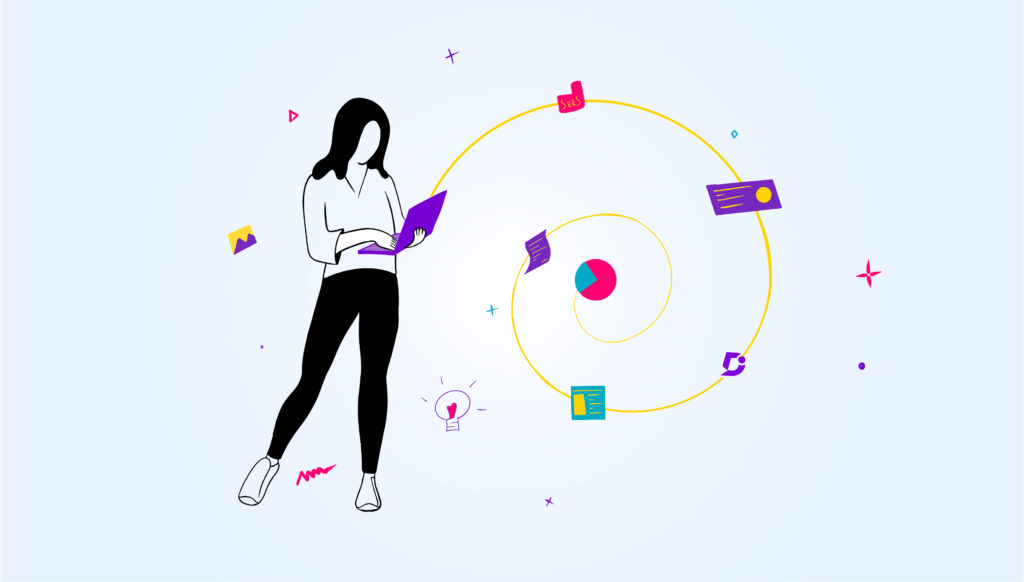


 –
– 
